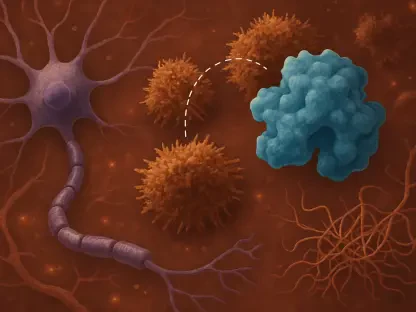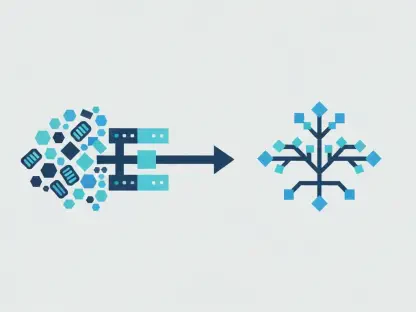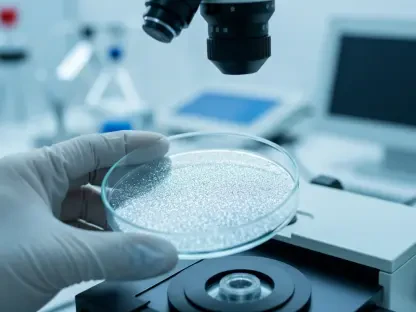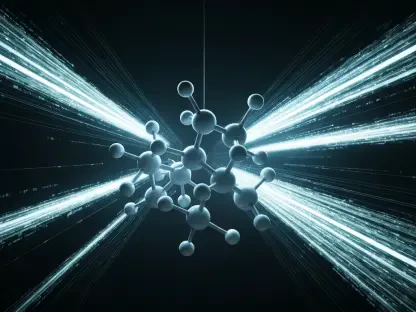Imagine a world where a solution to one of the deadliest cancers among men lies hidden beneath the ocean’s surface, offering hope to those battling prostate cancer. This disease, claiming over 375,000 lives globally each year, often evolves into drug-resistant forms that defy conventional treatments, leaving patients with limited options. Amid this daunting challenge, researchers are turning to marine ecosystems for answers, specifically to compounds derived from starfish. This roundup gathers insights, opinions, and reviews from various scientific perspectives to explore whether triterpene glycosides from starfish, such as cucumarioside C1 (CuC1), could offer a breakthrough in battling drug-resistant prostate cancer. By compiling diverse viewpoints, the aim is to shed light on the potential of these oceanic treasures and the hurdles they face in becoming viable therapies.
Diving into Marine Solutions: Perspectives on Starfish Compounds
The Urgency of Novel Treatments
Drug-resistant prostate cancer stands as a formidable barrier in oncology, with many patients progressing to castration-resistant or aggressive variant forms after initial therapies fail. Experts across the field emphasize the critical need for innovative approaches, as resistance mechanisms like P-glycoprotein (P-gp) efflux pumps and activated survival pathways outsmart existing drugs. A consensus among researchers highlights that without new interventions, survival rates for advanced cases will remain dismal, pushing the scientific community to explore unconventional sources for hope.
A growing number of studies point to marine environments as untapped reservoirs of potential anticancer agents. Compounds from oceanic organisms, including starfish, have captured attention for their unique chemical structures, which differ vastly from terrestrial molecules. Some scientists argue that these differences could be key to overcoming resistance, offering a fresh arsenal against tumors that no longer respond to standard chemotherapies.
Starfish-Derived Triterpene Glycosides: A Mixed Bag of Promise
Focusing on triterpene glycosides from the starfish Solaster pacificus, many researchers praise the compound CuC1 for its impressive potency against resistant prostate cancer cell lines. Data from multiple lab studies reveal IC50 values in the low-micromolar range (0.25-5.7 µM), even in docetaxel-resistant models, suggesting a robust ability to kill cancer cells. Advocates within the scientific community view this as a significant step toward addressing unmet needs in treatment landscapes.
However, not all opinions align on its readiness for clinical use. Critics point to CuC1’s lack of selectivity, with a selectivity index of 0.7 indicating higher toxicity to non-cancerous cells than desired. Some experts caution that this off-target effect could pose risks to patients, urging tempered optimism until further refinements are made. The debate continues on whether the compound’s benefits outweigh its current limitations.
Mechanisms and Innovations: What Experts Are Saying
Targeting Resistance Through Unique Pathways
One widely discussed aspect of CuC1 is its ability to bypass P-gp-mediated resistance, a common hurdle in prostate cancer treatment. Several researchers note that unlike many conventional drugs, this starfish compound remains effective even when efflux pumps attempt to expel it from cancer cells. This property has sparked excitement among oncology specialists who see it as a potential game-changer for patients with resistant tumors.
Further insights reveal CuC1’s impact on survival pathways like ERK1/2 and p38 MAPKs, which cancer cells often exploit to evade death. Experts who have analyzed kinome profiling data commend the compound’s dual action—inducing cytotoxicity at high doses while modulating these pathways at lower concentrations. Yet, a few voices express concern over the unpredictability of such broad pathway interference, warning of possible unintended consequences in healthy tissues.
Synergy with Existing Therapies: A Collaborative Approach
Combination therapy emerges as a hot topic among scientists evaluating CuC1. Many highlight in vitro results showing strong synergy with chemotherapies like cisplatin and docetaxel, particularly in resistant cell lines, with ZIP synergy scores above 10 at higher doses. Proponents argue that pairing marine compounds with established drugs could create a multi-pronged attack, reducing the likelihood of resistance development.
On the flip side, some researchers note variability in synergy across different cell lines, with additive or even antagonistic effects at lower doses in certain models. This inconsistency leads to calls for more tailored approaches, ensuring that combination strategies are customized to specific patient profiles. The discussion underscores a broader need for precision in how these compounds are integrated into treatment plans.
Marine Compounds in Oncology: Broader Trends and Opinions
The shift toward marine-derived solutions reflects a larger trend in cancer research, with experts globally recognizing the ocean as a source of novel molecules. Bioprospecting advocates stress that ecosystems like coral reefs and deep-sea habitats hold chemical diversity unmatched by synthetic libraries. They argue that compounds like triterpene glycosides could inspire entirely new classes of therapeutics over the coming years.
Skeptics, however, challenge the notion that natural origins guarantee safety or efficacy. Toxicity data for CuC1 and similar molecules often reveal drawbacks, prompting some to demand stricter scrutiny before these compounds advance. This divide in opinion fuels ongoing dialogue about balancing innovation with rigorous safety assessments in the pursuit of cancer cures.
Practical Applications and Future Directions
Enhancing Impact Through Combination Strategies
A recurring theme in expert reviews is the potential of CuC1 to amplify the effects of existing therapies when used in tandem. Many scientists suggest that its ability to induce both apoptosis and necroptosis—two distinct cell death mechanisms—offers a strategic advantage against resistant tumors. This dual-death approach is seen as a way to outmaneuver cancer’s adaptive defenses.
Additional perspectives focus on CuC1’s toxicity profile, which avoids DNA-damaging effects seen in heavy-metal drugs like cisplatin. Some researchers view this as a promising safety feature, even if selectivity remains an issue. They propose that future studies should prioritize refining dosages and delivery methods to maximize benefits while minimizing harm to healthy cells.
Bridging the Gap from Lab to Clinic
Across the board, there is agreement on the need for in vivo studies to validate CuC1’s lab-based promise. Experts stress that animal models and early-phase clinical trials will be crucial in understanding pharmacokinetics and real-world efficacy. Some also advocate for interdisciplinary collaboration to accelerate this transition, combining insights from chemistry, biology, and medicine.
Another practical suggestion gaining traction is increased funding for marine bioprospecting initiatives. Many in the field believe that public and private investment could unlock more compounds with therapeutic potential, expanding the pipeline of options for prostate cancer patients. This call for support reflects a shared vision of turning oceanic discoveries into tangible treatments.
Reflecting on a Wave of Possibilities
Looking back, the exploration of starfish compounds like CuC1 sparked vibrant discussions among researchers and oncology specialists. Diverse opinions converged on the compound’s potential to tackle drug-resistant prostate cancer through unique mechanisms and synergistic effects, while diverging on concerns over selectivity and clinical readiness. The insights gathered painted a picture of cautious hope, tempered by the recognition of significant hurdles. Moving forward, the scientific community should prioritize in vivo research and selectivity improvements, alongside advocating for resources to sustain marine bioprospecting. Exploring related studies on natural anticancer agents or supporting initiatives from 2025 to 2027 could further illuminate paths to transforming these oceanic compounds into lifesaving therapies for millions.









